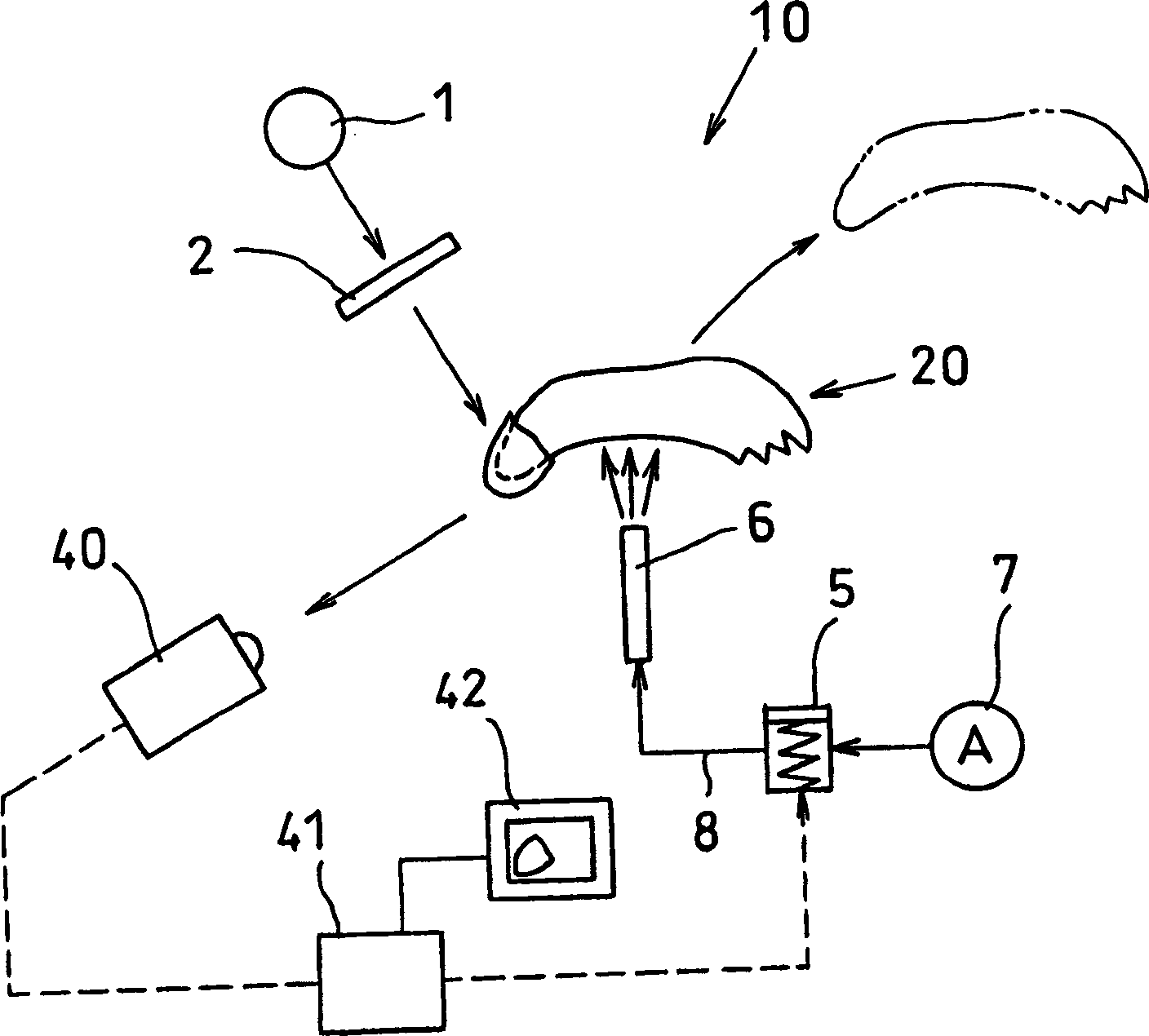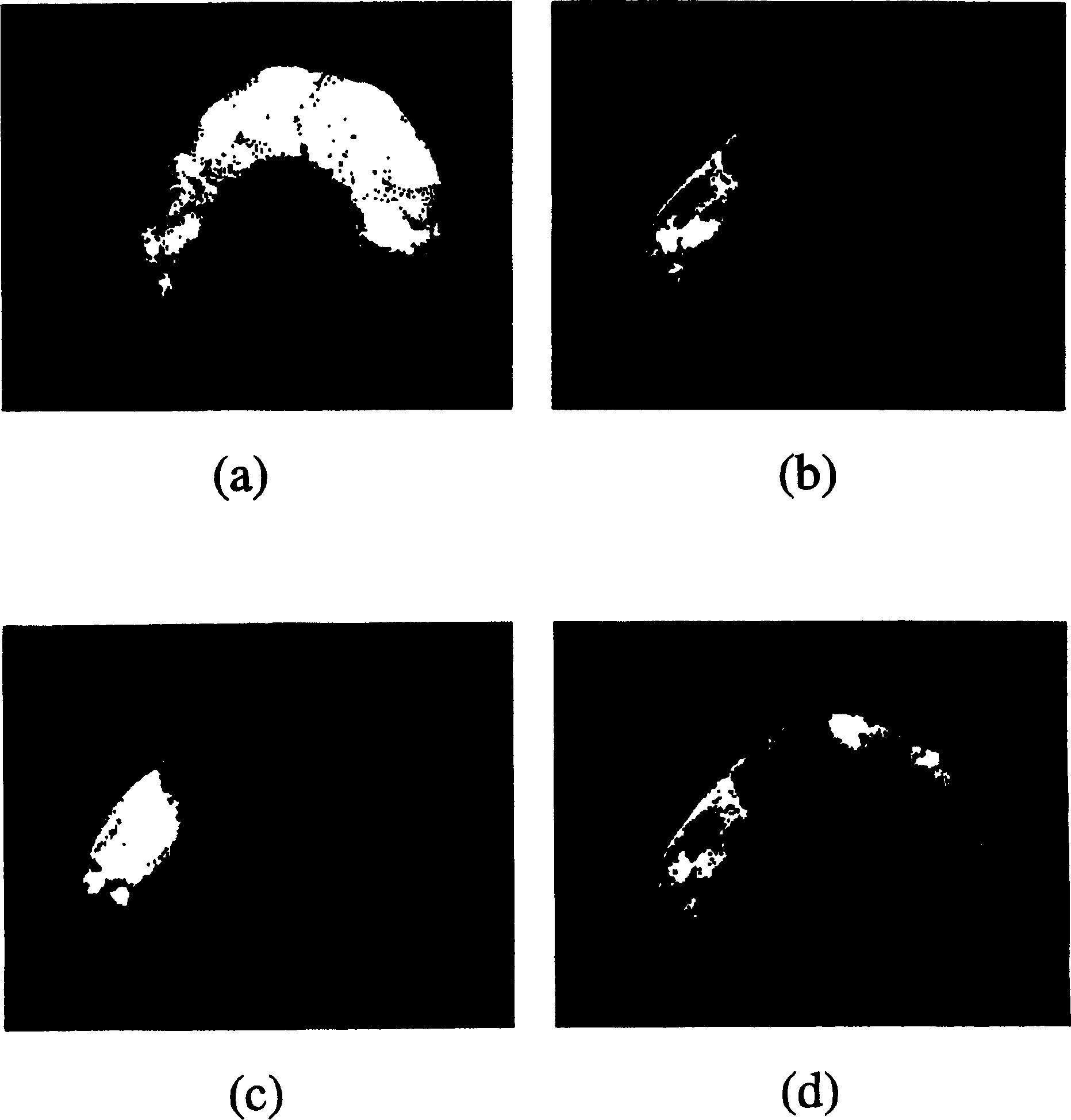Method and device for detecting/removing crustacean with untorn shell
A detection device and animal technology, applied in the field of the present invention, can solve problems such as non-discovery, damage to consumers' taste, and decline in commercial value
- Summary
- Abstract
- Description
- Claims
- Application Information
AI Technical Summary
Problems solved by technology
Method used
Image
Examples
Embodiment Construction
[0018] An embodiment is described below in conjunction with the result of a real experiment. In this embodiment, check whether there are residual shells on the shrimp after shelling, and remove them if there are residual shells. In the experiment, the shelled frozen shrimp (fatback shrimp) used as a sample was thawed and most of the shells were peeled off by hand, leaving only a part of the shell at the joint just in front of the tail. The size of the shelled frozen shrimp is: 100-200 shrimps per pound, and the average size of the remaining shell is about 8mm×6mm.
[0019] First, light from a general light source (near white light) having three peaks of 440 nm, 550 nm, and 670 nm was irradiated onto each sample using a light irradiation device with a light quantity of 1000 μW / cm2. Then, perform a visual inspection to see if the shell can be distinguished from the flesh. However, it is impossible to distinguish the shell from the flesh. Images of each sample were then taken w...
PUM
 Login to View More
Login to View More Abstract
Description
Claims
Application Information
 Login to View More
Login to View More - Generate Ideas
- Intellectual Property
- Life Sciences
- Materials
- Tech Scout
- Unparalleled Data Quality
- Higher Quality Content
- 60% Fewer Hallucinations
Browse by: Latest US Patents, China's latest patents, Technical Efficacy Thesaurus, Application Domain, Technology Topic, Popular Technical Reports.
© 2025 PatSnap. All rights reserved.Legal|Privacy policy|Modern Slavery Act Transparency Statement|Sitemap|About US| Contact US: help@patsnap.com



